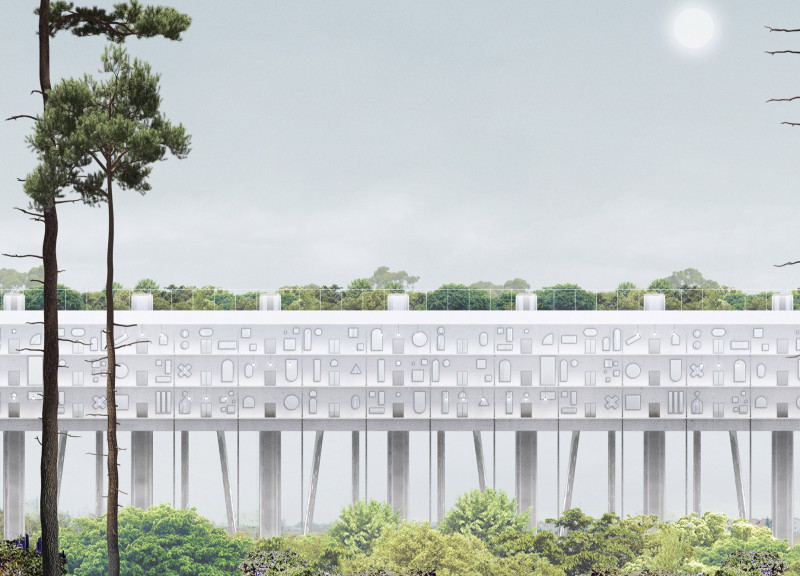5 key facts about this project
The Seam is a housing design located in Toronto that addresses the issue of affordability while promoting community connections among different social groups. It offers a thoughtful approach that considers the complexities of urban living. The design is meant to create an environment that is both sustainable and inclusive, moving beyond typical low-income housing solutions.
Grid Planning and Green Arteries
At the center of the design is a grid planning structure combined with green zone arteries. This layout allows for easy movement within the city, encouraging walking and cycling. By connecting various neighborhoods, the design aims to enhance interaction among residents. The goal is to create a space that supports community ties and active engagement in daily life.
Housing Typologies
The project includes a variety of housing types to suit different household sizes. The Main Living Unit is suitable for 1-2 adults and contains essential features like a bedroom, bathroom, kitchen, and storage area. These elements are designed for easy access to utility connections. The Additional Living Unit is tailored for families, including separate bedrooms and workspaces to meet diverse household needs. This flexibility allows the design to adapt over time as living situations change.
Bridge House Structure
A notable feature of The Seam is the Bridge House, an elevated structure positioned above the highway. This design choice helps tackle space constraints often found in urban areas. The Bridge House not only increases the number of available homes but also encourages social interaction among residents. Its design serves as a model, showing how elevated structures can enhance urban life while fitting into the existing city layout.
Sustainability and Future Mobility
Sustainability plays a significant role in the project, especially regarding green spaces that are often underutilized. Instead of serving just as buffers, these areas are envisioned as lively public spaces that improve residents' quality of life. The design also looks ahead to future changes in transportation. It suggests a shift towards mixed-use transport systems that could reshape how people move throughout the city.
The Seam incorporates adaptable housing solutions that encourage interaction among residents. Communal spaces are included to foster a sense of belonging and community, enhancing the overall urban experience for all who live there.



















































